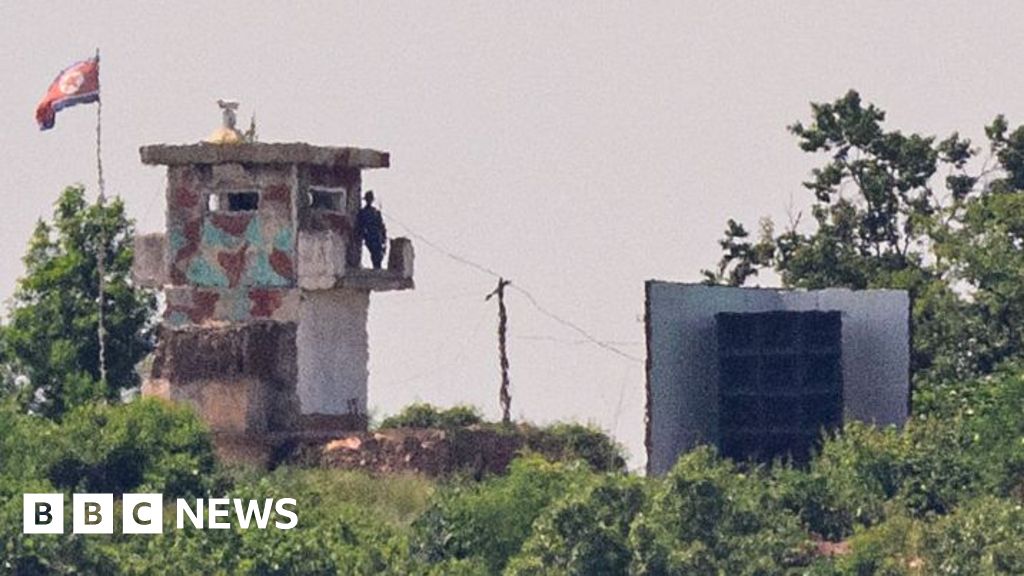Listen to the article
North Korea Dismantles Border Loudspeakers in Gesture Toward Improved Relations
South Korea’s military confirmed Saturday that North Korea has begun removing propaganda loudspeakers along their heavily fortified border, marking a potential thaw in the tense relationship between the two nations.
“We have detected North Korean troops dismantling propaganda loudspeakers in some parts along the front line from this morning,” South Korea’s military stated. Officials added they are still monitoring whether the removal extends to all regions of the 250-kilometer (155-mile) border.
The move appears to be a direct response to South Korea’s similar action earlier this week, when it dismantled some of its own loudspeakers following the election of President Lee Jae Myung. The new South Korean leader, who took office in June, campaigned on a platform emphasizing improved inter-Korean relations and promptly halted propaganda broadcasts after his inauguration.
For decades, both countries have used these powerful speaker systems as psychological warfare tools. South Korea typically broadcast K-pop music, news reports, and information about life outside North Korea’s closed society. Pyongyang countered with unsettling sounds like howling animals, anti-South rhetoric, and ideological messages glorifying the Kim regime.
Border residents on both sides have long complained about the disruptive broadcasts, which Seoul claims could be heard up to 10 kilometers (six miles) across the border during daylight hours and as far as 24 kilometers (15 miles) at night. The constant barrage of noise, sometimes occurring in the middle of the night, significantly disrupted daily life in these communities.
The loudspeaker exchanges had previously been suspended for six years but resumed in June 2024 after North Korea began sending balloons filled with trash and propaganda leaflets into South Korean territory. This latest mutual suspension represents the most significant de-escalation between the nations in recent months.
However, not all South Koreans support the decision. Human rights organizations focused on North Korean issues have criticized the move, arguing that information broadcasts are one of the few ways to penetrate North Korea’s strict information controls and provide citizens with alternative perspectives.
The relationship between the two Koreas has fluctuated dramatically in recent years. Under former President Yoon Suk Yeol, who adopted a more hawkish stance toward Pyongyang, tensions escalated considerably. Yoon was later impeached and removed from office in December after briefly imposing martial law, citing alleged threats from “anti-state forces” and North Korean sympathizers.
The dismantling of loudspeakers comes amid a significant ideological shift in North Korea. For decades, reunification with the South had been a cornerstone of North Korean state ideology. However, in 2024, leader Kim Jong Un formally abandoned this principle, signaling a fundamental change in the regime’s approach to inter-Korean relations.
Both nations technically remain at war, as the 1950-1953 Korean War ended with an armistice rather than a peace treaty. The heavily militarized Demilitarized Zone (DMZ) continues to be one of the most fortified borders in the world, with approximately two million soldiers stationed on both sides.
This latest development could signal a potential opening for diplomatic engagement, though analysts remain cautious about predicting any substantial breakthrough given North Korea’s continued missile tests and nuclear development programs over the past year.
Verify This Yourself
Use these professional tools to fact-check and investigate claims independently
Reverse Image Search
Check if this image has been used elsewhere or in different contexts
Ask Our AI About This Claim
Get instant answers with web-powered AI analysis
Related Fact-Checks
See what other fact-checkers have said about similar claims
Want More Verification Tools?
Access our full suite of professional disinformation monitoring and investigation tools



